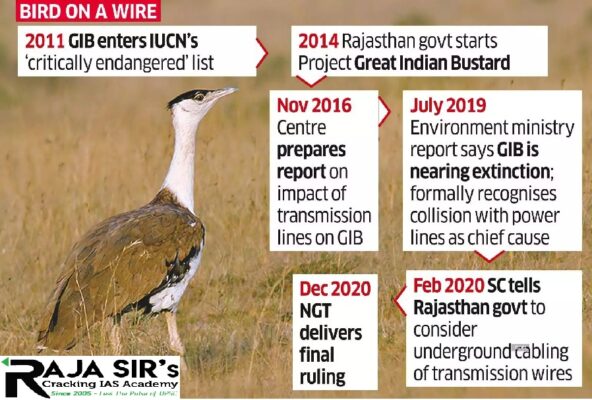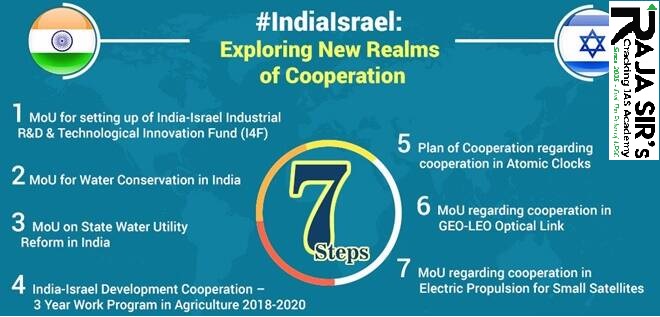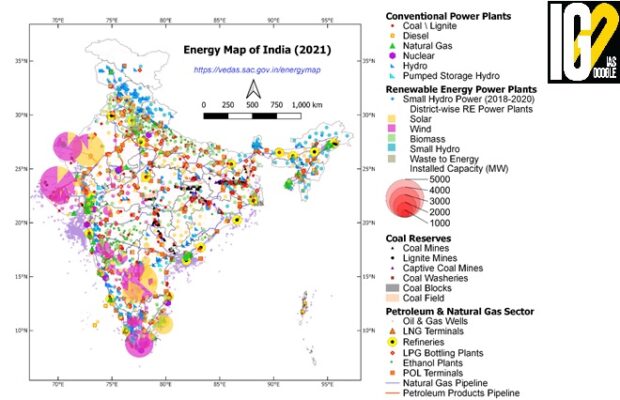- Home
- Prelims
- Mains
- Current Affairs
- Study Materials
- Test Series
21st Oct 2021
ARCTIC MELT: WILL POLAR BEARS VANISH BY 2100?
A new study published in the journal Earth’s Future, has put a timeline to an impending disaster of shrinkage of summer sea ice in the Arctic.
About the study:
 The research looked at two scenarios:
The research looked at two scenarios:










 The research looked at two scenarios:
The research looked at two scenarios:
- Optimistic scenario: (if carbon emissions are brought in check)
- Some summer ice could persist indefinitely.
- Pessimistic: (if emissions continue as they are)
- Summer ice would disappear by the end of the century.
- Under the low-emissions scenario, Ice from even the central Arctic will wane by mid-century, and will no longer endure through the year.

- Shrinkage of summer sea ice in the Arctic has long been a concern, especially for species that depend on it for survival.
- If carbon emissions continue at current levels, summer ice will disappear by 2100 and, along with it, creatures such as seals and polar bears.
- In winter, most of the Arctic Ocean surface freezes, and scientists expect this to continue for the foreseeable future, even as climate warms.
- In summer, when some of the ice melts, winds and currents carry it for great distances– some of it into the North Atlantic, but much of it into the Arctic’s farthest-north coasts, along Greenland and the Canadian islands.
- This results in a rich marine ecosystem. On the Arctic ice, algae bloom.
- These feed tiny animals, which in turn feed fish, which in turn feed seals, which feed polar bears at the top of the chain.
- The irregular topography also helps create lairs for seals, and ice caves for polar bears during the winter.
- But with a warming climate, summer sea ice has been shrinking fast, and now consistently spans less than half the area it did in the early 1980s.
- Under the low-emissions scenario, at least some seals, bears and other creatures may survive.
- These species currently exist under similar summer conditions along western Alaska and parts of Hudson Bay.
- Under the higher-emissions scenario, by 2100, even the locally formed ice will disappear in summer and with that there will be no ice-dependent ecosystems.
- If the year-round ice goes away, entire ice-dependent ecosystems will collapse, and something new will begin.

- Kokilabari Seed Farm is famous for its floricans.
- Land-use changes at the site, which houses 25 Bengal floricans, is posing a threat to the critically endangered bird.
- The species is found in very small numbers only in India and Cambodia. About a hundred of them are present in Nepal and the species is extinct in Bangladesh.
- The Bengal florican is a bustard species native to the Indian subcontinent, Cambodia, and Vietnam.
- It is the only member of the genus Houbaropsis.
- Only 1,000 of them were estimated to be alive as of 2017.
- Adult Bengal floricans range from 66–68 cm in length and 55 cm tall.
- They have black plumage from the head and neck to underparts.
- Its head carries a long lanky crest, and the neck has elongated display plumes.
- The upper side is buff with black vermiculation’s and black arrowhead markings.
- There is a large white patch from the wing coverts to the remiges. The feet and legs are yellow.

- It has two disjunct populations, one in the Indian subcontinent, another in Southeast Asia.
- The former occurs from Uttar Pradesh through the Terai of Nepal to Assam and Arunachal Pradesh.
- The Southeast Asian population occurs in Cambodia adjacent to southern Vietnam.
- The birds use grasslands near the lake to breed, and move away in the wet season.
- The Terai population move to warmer lowland locations in winter.
- IUCN Status: Critically Endangered [Red List]
- The countries have been trying to negotiate a trade agreement over the past 14 years.

- India and Israel have established bilateral consultation mechanisms in all sectors of collaboration, including water, agriculture, counter-terrorism, and defence.
- Bilateral merchandise trade stand at US$ 4.14 billion (excluding defence) during the period April 2020 – February 2021 with the balance of trade being in India’s favor.
- Trade in diamonds constitutes about 50% of bilateral trade.
- India is Israel's third-largest trade partner in Asia and seventh largest globally.
- Major exports from India: Precious stones and metals, chemical products and textiles and textile articles.
- Major imports by India: Precious stones and metals, chemicals and mineral products, base metals and machinery and transport equipment.
- Exchange of culture and art experts.
- Yoga and Ayurveda are popular in Israel.
- Indian Cultural Centre in Tel Aviv started functioning in January 2020 and regularly organizes events to promote cultural ties.
- Devising youth exchange programmes and encouraging sports-related interaction among youth.
- India is the largest buyer of Israeli weapons and Israel is India’s second-largest weapons supplier.
- India’s Defence Research and Development Organization (DRDO) and Israeli Aerospace Industries (IAI) are currently collaborating on developing surface-to-air missile systems for the Indian armed forces.
- Indian armed forces have also inducted Israeli UAVs, radar systems, surveillance technology as well as anti-aircraft missiles and air-to-air missiles.
- India and Israel have signed a MoU, with a contribution of US $ 20 million from each side over 5 years, for establishing industrial R&D and Innovation fund.
- On December 21, 2020, India and Israel signed an Agreement on cooperation in the fields of health and medicine. The agreement envisages deepening of strategic partnership in the health sector, including in R&D in health, between the two countries.
- Cumulative FDI from India, as of September 2019, was about US$ 118 million as compared to Israel’s direct FDI into India of US$ 224.76 million during April 2000 – March 2021.
- Agricultural cooperation between the two sides is formalized through three-year action plans. The two sides are currently implementing the fifth phase of the joint action plan (2021-23).
- Twenty- nine Centers of Excellence for Horticulture are fully active in twelve Indian states.

- NITI Aayog has collaborated with Indian Space Research Organisation (ISRO) and Energy Ministries of Government of India to produce this map.
- The map provides a holistic picture of all energy resources of the country-- installations such as conventional power plants, oil and gas wells, petroleum refineries, coal fields and coal blocks, district-wise data on renewable energy power plants and renewable energy resource potential etc.--which enables visualisation of energy through 27 thematic layers.
- To identify and locate all primary and secondary sources of energy.
- To locate transportation/transmission networks of energy resources.
- To provide a comprehensive view of energy production and distribution in India.
- To integrate energy data scattered across multiple organizations and present it in a consolidated, visually appealing graphical manner.
- Tor ensure real-time and integrated planning of energy sector of India.
- To serve as a research tool in energy policy making.

- A geographic information system (GIS) is a system that creates, manages, analyses, and maps all types of data.
- GIS connects data to a map, integrating location data (where things are) with all types of descriptive information (what things are like there).
- GIS provides the capability to relate previously unrelated information, through the use of location as the "key index variable".
- GIS data represents real objects (such as roads, land use, elevation, trees, waterways, etc.) with digital data determining the mix.
- It is an important tool in spatial analysis.
- Spatial analysis is used to evaluate suitability and capability, estimate and predict, interpret and understand, and lend new perspectives to a decision-making process.

- The WEO is the energy world’s most authoritative source of analysis and projections.
- This is a flagship publication of the IEA since 1998.
- Objective: Data analysis to provide critical insights into global energy supply and demand in different scenarios and the implications for energy security, climate targets and economic development.
- 2021 Theme: Guide to the opportunities, benefits and risks ahead at this vital moment for clean energy transitions.
- Investment in renewable energy need to triple by the end of this decade to contain the global temperature rise to 1.5 degree Celsius.
- Demand for renewables continues to grow.
- However, the clean energy progress is still far too slow to put global emissions into sustained decline towards net zero by 2050.
- More than 40% of the required emissions reductions would come from measures that pay for themselves, such as improving efficiency, limiting gas leakage, or installing wind or solar in places where they are now the most competitive electricity generation technologies.
- First scenario: With the measures and policies that governments have already put in place, the temperatures in the year 2100 would be 2.6 C higher than preindustrial levels.
- Second scenario: With governments’ pledges to achieve net-zero emissions & doubling clean energy investment over the next decade with timely implementation, the global average temperature increase would be around 2.1 C by 2100.
- This would be still well above the 1.5 Celsius agreed under the Paris accord.
- International Energy Agency is a Paris-based autonomous intergovernmental organisation established in the framework of the Organisation for Economic Co-operation and Development (OECD) in 1974 in the wake of the 1973 oil crisis.
- The IEA was initially dedicated to responding to physical disruptions in the supply of oil, and providing statistics about the international oil market and other energy sectors.
- The IEA has since evolved to act as a policy adviser to support energy security and advance the clean energy transition worldwide.
- Mandate:
- To provide analysis, data, policy recommendations and solutions to help countries ensure secure, affordable and sustainable energy for all.
- To support global efforts to accelerate the clean energy transition and mitigate climate change.
- To promote rational energy policies and multinational energy technology co-operation with a view to reaching net zero emissions.
- India is an associate member of the IEA and not a member state.

- The conventional LED materials cannot emit white light.
- The specialized techniques such as coating blue LED with yellow phosphor and combining blue, green, and red LEDs, have been used to produce white light.
- There has been a worldwide search for materials that can directly emit white light rather than through these indirect techniques that can cause loss of efficiency.
- Researchers at The Indian Institute of Technology (IIT) Madras have successfully developed a white light emitter for use in LEDs.
- The development of energy-efficient Light Emitting Diodes or LEDs replaced the energy-inefficient incandescent lamps in lighting and display applications.
- The innovation has been patented by the researchers and was recently granted the Government of India’s ‘SERB-Technology Translation Award.’

- The indigenously-developed bright white light emitters can potentially replace the conventional high-cost materials and phenomenally save the energy cost per lumens.
- White LEDs can potentially be used in liquid crystal display backlights, display mobile lighting, and medical and communication equipment.
- LED is termed as the light-emitting diode, which is a semiconductor light source that emits light when current flows through it.
- It consumes less electricity, can save up to 80% of light electricity bill and are energy-efficient.
- They are durable and last up to 15 years with a constant amount of light.
- They maintain a cold temperature. Unlike those old fluorescent lamps, LEDs do not heat up.
- The excessive heat and ultraviolet radiation present can be a hazard to people and materials. Whereas, LED lights emit no ultraviolet radiation.
- They do not produce blue waves and let our brain feel relaxed and increases productivity.
- The lights contain no mercury, and have a very low environmental impact than incandescent bulbs.
- The Science and Engineering Research Board (SERB) is a statutory body established by the Government of India through Science and Engineering Research Board Act, 2008.
- Objective: To promote basic research in emerging areas of Science & Engineering.
- It works for promoting excellence in research, together with equity and inclusiveness.
- It supports research in frontier areas of Science and Engineering. A regular faculty/researcher in an academic / research institution can seek research support to carry out his/her research.
- It gives special attention to young scientists below the age of 35 years (relaxable by 5 years in the case of SC/ST/OBC.
- It offers JC Bose National Fellowship to scientists and engineers for their outstanding performance and contributions and RAMANUJAN Fellowship for brilliant scientists and engineers from all over the world to take up scientific research positions in India.
- SERB-TETRA aims to provide award to competitively funded Core Research Grants (CRG) and similar projects, holding potential and promise for technology translation.
- The Science and Engineering Research Board (SERB) provides financial assistance to researchers, academic institutions, research and development laboratories, industrial concerns, and other agencies.
- Milad-un-Nabi or Eid-e-Milad or Mawlid is celebrated on the occasion of the birthday of the Prophet of Islam, Hazrat Mohammad Saheb.
- The festival is observed by many Muslims from the Sufi or the Barelvi school of thought.
- It is also known as Un-Nabi by the name of E-Milad, Nabi Day, Mohammad's birthday or the Prophet's birthday.
- First celebrated as an official festival in Egypt, the celebrations of Eid-e-Milad became more popular during the 11th century.
- It is believed that Sunni Muslims celebrate Eid Milad-un-Nabi on the 12th of the Islamic month of Rabi al-Awwal, and Shia Muslims observe it on the 17th of Rabi al-Awwal.
- Muslims from Salafi and Wahhabi schools of thought do not mark the tradition of festivities.

- The award will bring her story the attention it deserves and will also pave the way for recognition of women, especially those of colour, who have made “incredible but often unseen contributions to medical science”.
- Her family was not rewarded for the gains made using her cells and the scientific community hid her race and story for years.
- Her biopsy samples (collected without her consent or understanding) made possible innumerable breakthroughs in medical sciences and also aided research on the novel coronavirus disease (COVID-19).
- Her ‘cell line’ was critical for the development of “the human papillomavirus (HPV) vaccine, the polio vaccine, drugs for HIV and cancers.
- Her ‘cell line’ was the first immortal line of human cells to divide indefinitely in a laboratory.
- Called ‘HeLa’ cells, Lack’s bioses was also of paramount importance in research on Parkinson’s disease, reproductive health (including in vitro fertilisation), chromosomal conditions, gene mapping and precision medicine.
- Kushinagar is the centre of the Buddhist circuit, which consists of pilgrimage sites at Lumbini, Sarnath and Gaya.
- Buddhist pilgrims consider Kushinagar a sacred site where Gautama Buddha delivered his last sermon and attained ‘Mahaparinirvana’ or salvation.
- Sri Lanka will present to India photographs of two murals paintings.
- Mural depicting ‘Arahat Bhikkhu’ Mahinda, son of Emperor Ashoka delivering the message of the Buddha to King Devanampiyatissa of Sri Lanka.
- The arrival of ‘Theri Bhikkhuni’ Sanghamitta, the daughter of the Emperor, in Sri Lanka, bearing a sapling of the ‘sacred Bodhi tree’ under which Siddhārtha Gautama is believed to have obtained enlightenment.









 Latest News
Latest News
 General Studies
General Studies